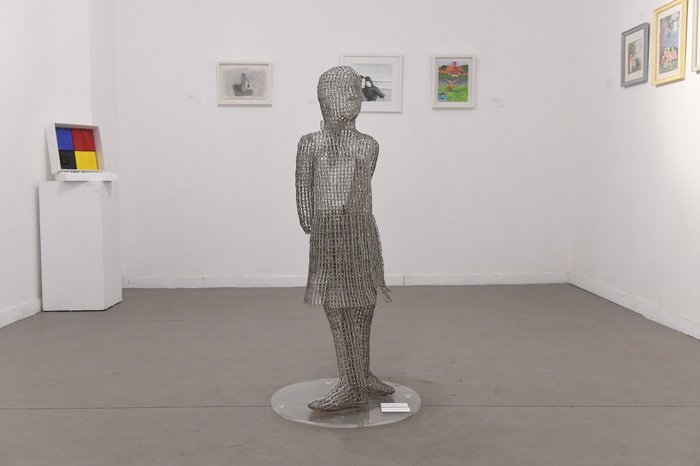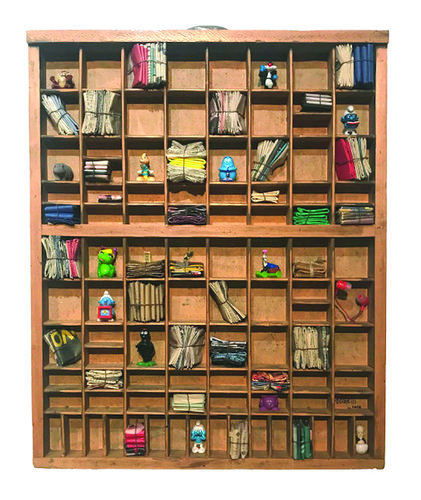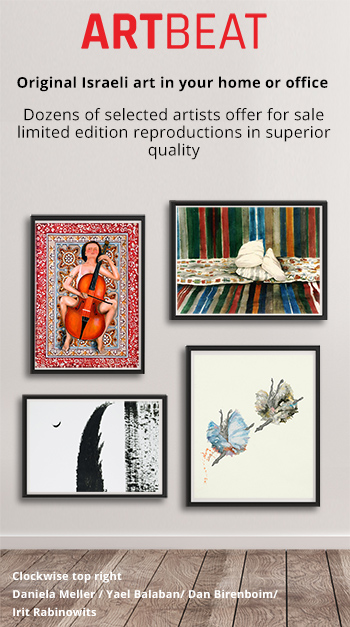Art Shows > Unforgettable Childhood
Unforgettable Childhood / Zaritsky Artists Houseטלפון - 03-5246685 22/11/2018 to - 28/12/2018 Children have always been the protagonists of novels, poems and dramas and have also been widely represented subjects in the history of art. Famous artists have created masterpieces that have left a permanent trace over the centuries and also a testimony of the children’s condition: from the portraits of noble families to the frescoes of children in the fields, from the carefree games to life in poverty, from a lost childhood to privileges, from art and music lessons to the most tiring and humble jobs. Numerous examples can be cited, from the bas-relief of Augustus’ Ara Pacis in Rome, representing a son who clings to his father while addressing his knowing affection to his mother who caresses him and lovingly looks at him, to the painting “The massacre of the innocents” by Duccio di Buoninsegna, not to mention the Renaissance during which the little ones of the family were portrayed. The 20th century was a very lively one, following the birth of new techniques such as photography, which allows representing episodes of real life – often, traumatic ones. In this phase, we cannot forget the famous photo by Diane Arbus “Child with Toy Hand Grenade” which depicts a child with an alienated look that clenches a toy replica hand grenade in one hand, while his other hand is held in a claw-like gesture. Art has given us a cross-section of childhood and adolescence that can be equated with a sociological and anthropological treatise. We have all been little children; during life, one might not become a father, mother, husband or wife, and the mere fact of existing implies infancy: it is a phase that is common to everyone and, as such, is indelible. This is how the Unforgettable Childhood project was born. It deals with the theme of childhood: unforgettable, both for the beautiful memories and for the most painful and sad ones. The exhibition was created by the cultural Association Acribia, in collaboration with the Italian Cultural Institute of Tel-Aviv, the Italian Embassy in Israel and the Jewish Museum of Bologna in Italy with the participation of 50 Israeli and Italian artists who have specially created about 80 works for this initiative. The first stage of this project was in Italy, where the exhibition was hosted at the former San Rocco Hospital in Matera and at the National Museum of Ravenna. On this occasion, I would like to thank Italy’s ambassador to Israel Gianluigi Benedetti, Dr. Fabio Ruggirello, director of the Italian Institute of Culture in Tel-Aviv who have decided to support the Unforgettable Childhood exhibition project and Arie Berkowitz, director of the House of artists in Tel-Aviv, where the exhibition will be hosted from November 22 to the end of December. A special thanks also to Dr. Vincenza Maugeri, director of the Jewish Museum of Bologna and to its president Guido Ottolenghi, who both enthusiastically welcomed the idea of ??setting up the Unforgettable Childhood exhibition in the wonderful premises of their Museum from March to May 2019 with the aim of developing more and more the cultural exchange between Israel and Italy. After stopping in Bologna, the exhibition will continue its journey throughout Italy to be hosted in other important museums. I conceived this exhibition in order to strengthen, through art, the construction of an international dialogue among the Mediterranean countries, to develop a knowledge base and relationships among artists of different cultures and religions with the belief that art is an instrument of peace and communication capable of breaking barriers and prejudices while favouring new relationships. I like to think of art as an ambassador that bears a mission: to offer the world the discovery of different habits that can surely coexist in the same place.
Unforgettable Childhood is an exhibition in which different expressions of art are represented: from painting to sculpture, from photography to drawing. Subjects, objects and moments of everyday life bear the witness of our strong need to remember the past in order to live the present and build the future: this is the criterion of my curatorial choices. Children are human beings in progress: everything is still possible and their actions are experiments in which they practice to be the adults of tomorrow, with simplicity and naturalness. I asked the artists to catch and represent this phase of existence. The human being is therefore at the centre of some works. This is, indeed, the title of Barbara Nejrotti’s work which reproduces the theme of motherhood from the paternal – and therefore, masculine – point of view, highlighting an almost visceral bond that children create with those who take care of them in growth. Motherhood is the main character also in the iron sculpture of Antonio Meneghetti. The innocence, the tenderness of a caress, of a look, and an affectionate gesture are the traits of Margherita Grasselli’s works with her terracotta sweet little girls, as well as those of Roberta Savelli, painted on gauze, of Riccardo Cordero, Sharon Rashbam Prop, Nava Abel, Valerio Berruti, Orna Ben-Ami, Adi Kichelmacher, Fabio Soto, Pietro d’Angelo, Daniele Basso, Bar Greenstein, Tobia Ravà, Claudia Giraudo, Simona Cavaglieri, Hana Silberstein, Francesca Duscià, Avivit Segal, Elisabetta Riccio, Nimi Getter, Carlo Galfione, David Kasman, , a sort of an “affection” section. In other cases, the artists chose to express the concept of unforgettable childhood through the representation of a game and the action of “playing” in which the protagonists are: the balloons and ice cream cones of Giorgio di Palma, the jump rope of Giuseppe Labianca, the little girl with a bucket of Tali Navon, Paolo Amico’s balloon, the merry-go-round of Eitan Vitkon and Hila Karabelnikof, the soap bubbles of Michael Lazar, the playful library of Isa Locatelli, the elephant sculpture of Menashe Kadishman, the installation of small games and deflated balloons of Suly Bernstein, the little girl with the duck of David Gerstein, the toy aeroplane of Boulakia, the swing of Daniel Tchetchik, Mickey’s mountain of Francesco De Molfetta, the teddy bear of Carla Chiusano, the bunny of Arie Berkowitz, the tinfoil boats of Riccardo Gusmaroli, Pulcinella of Lello Esposito, the racing car of Giovanni Albanese, the game-work “Testa di cavallo di Selene” (Horse’s head of Selene) and the sculptures of Camilla Ancillotto, the boxes with colourful boards of Angelica Romeo that remind us of the games of the past. In the works of Ruth Orenbach, Emilia Faro, Miriam Drath, Ronith Shalem, Orly Aviv and Dado Schapira the action of “playing” is represented as an expression of body movement. The works of some artists stand out for their originality and imagination, such as those by Gabriele Turola, Brigitta Huemer, Enrico De Paris, Ugo Nespolo, Eran Shakine, Vered Aharonovitch, Sher Avner and Mario Zito. The continuous experimentation typical of childhood in which children take possession of everything they find within reach is reflected in the use of particular techniques and materials such as sewing, the use of the 10-colour pen, watercolour, fabrics, iron, stainless steel paper clips, cork, shiny burnished steel, newspapers, adhesive tape, wood and tinfoil. This project has a value, not only for its varied expressiveness, but also because it reiterates that art is an idea, it is sensitivity and continuous innovation. Every ambitious project needs an impulse coming especially from the heart. I want to thank the Italian artists coordinated by Federica Barletta for their generous support, Vera Pilpoul who maintained the relations with the Israeli artists and all those who have made this exhibition possible.
Ermanno Tedeschi location - Zaritsky Artists House Time - 22/11/2018 to - 28/12/2018 Exhibition opening - 22/11/2018 |
|1|



